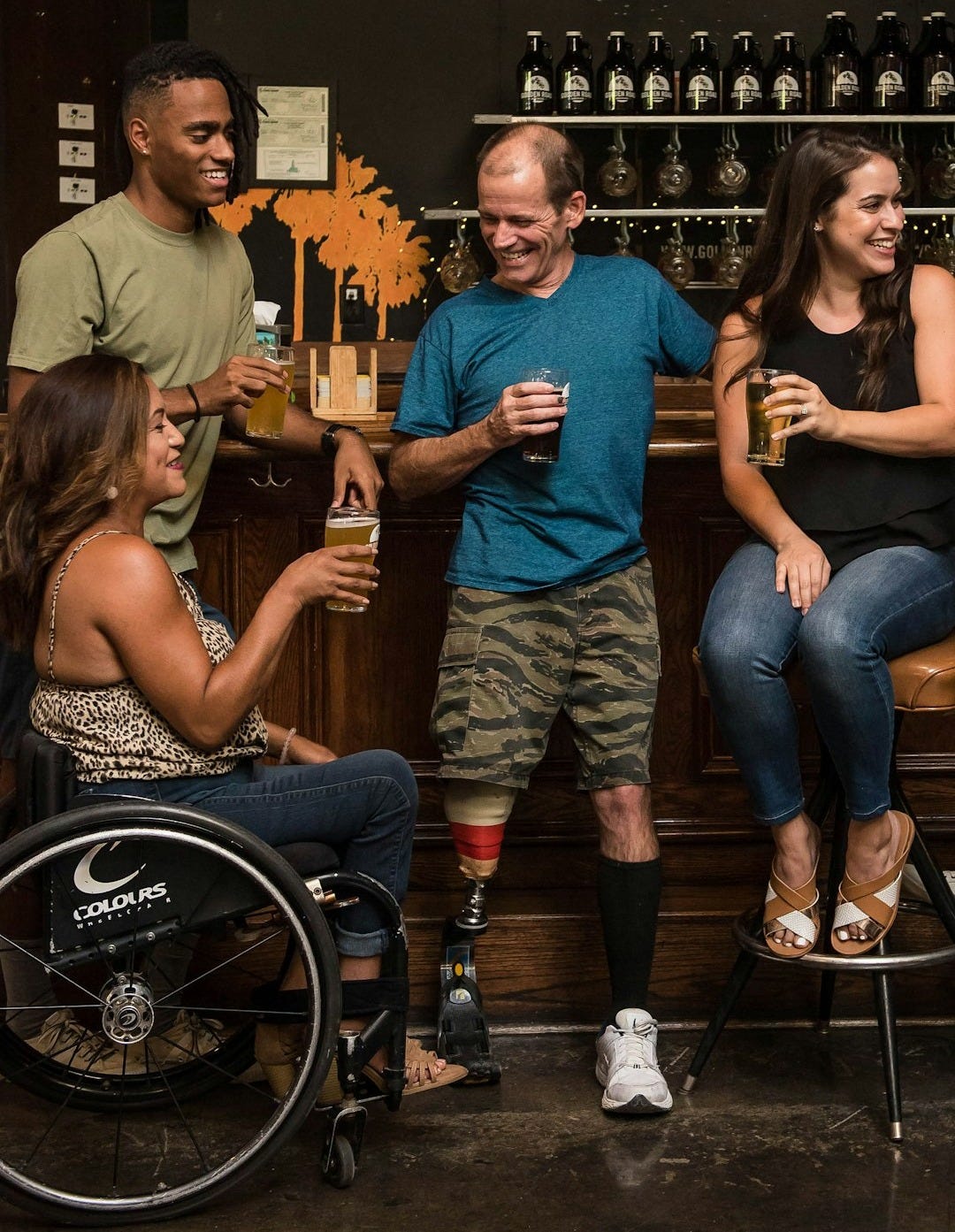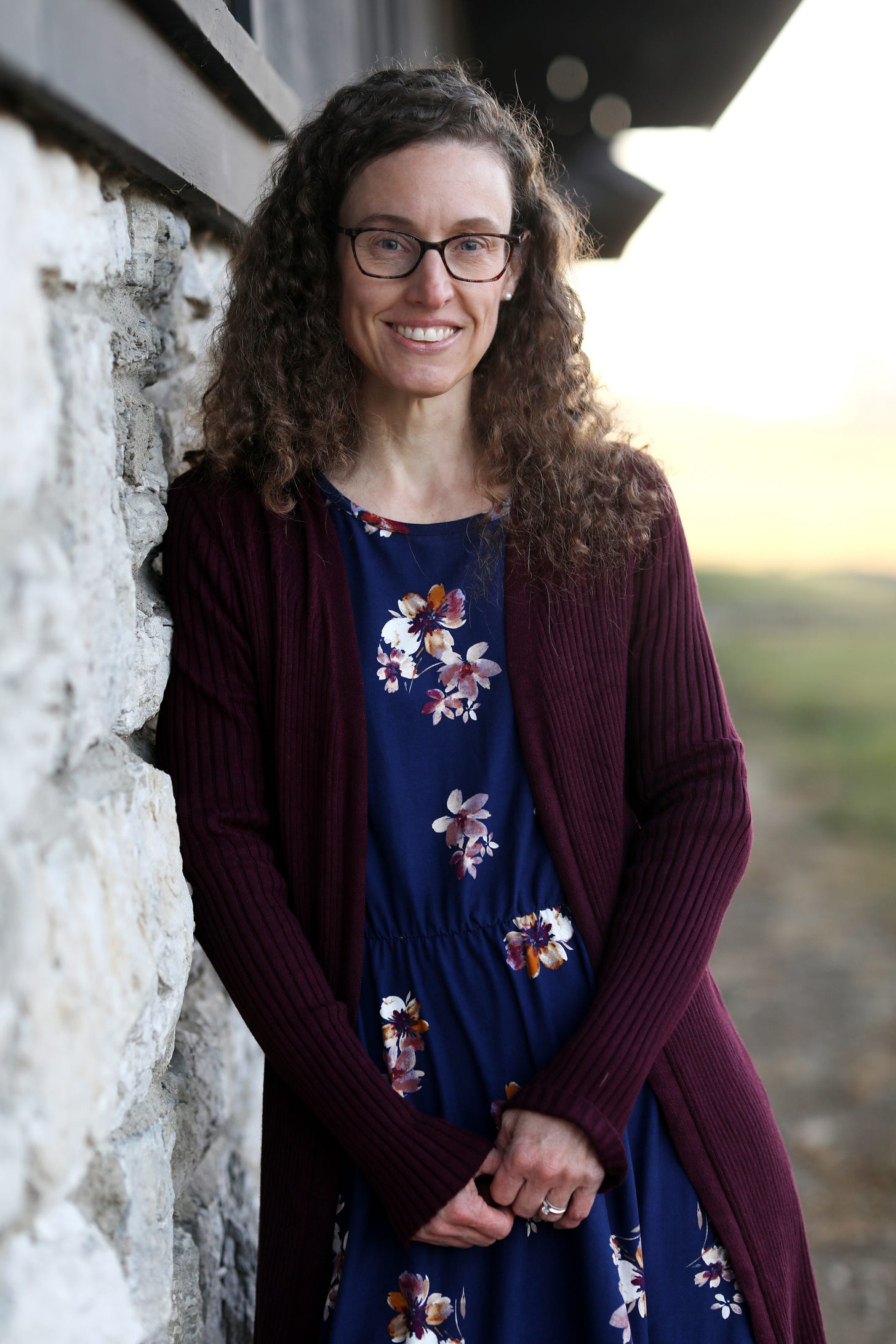Invisible. It’s how the one in four people belonging to the disability community might feel at any given time. Either their disabilities aren’t seen or acknowledged, or their disabilities are all that is seen and acknowledged. Their humanity is lost.
Most individuals with disabilities want to be seen as fully human with thoughts, feelings, experiences, and talents like most everyone else. They also want their disability and support needs to be seen and met, so that they, too, can engage with and impact the world.
It is difficult for this world to fully see, accept, and include a person with a disability just as they are. It is difficult for the church, too.
Historically, the church has been created for the physically, mentally, emotionally, and spiritually able. To walk in. To see in. To hear in. To speak in. To sing in. To sit still in. To make little to no noise in. To be happy all of the time in. To have little to no needs in.
The message the church can send if your body or mind functions differently and requires support needs is:
you aren’t welcome here
you don’t belong
you aren’t worth the investment of our resources to learn, grow, and change
you can’t lead worship here
But Jesus shows us a different way. When Jesus heals in the Gospels, he heals not just to perform a miracle. He heals to restore people to communities. He not only gives them access, but also full inclusion. He heals to break boundaries.
When Jesus rose from the dead, he rose with a disabled body. Yes, you read that correctly. “As he spoke, he showed them the wounds in his hands and his side. They were filled with joy when they saw the Lord.” (John 20:20) These were not scars. These were fresh wounds. Wounds that would have impacted how his body functioned. Wounds that could have separated him from the community. Wounds that couldn’t be hidden. Wounds he didn’t want to hide because they were part of how he was known.
His wounds didn’t separate him from his community, but led them to rejoice and welcome him. There was room for him at the table - wounds and all.
How much more full could churches, tables, and able-bodied lives be if they were accessible to and inclusive of people with disabilities? How much more full could the lives of people with disabilities be if they were able to show up in faith communities just as they are?
Is any of this really possible? Yes, I believe it is. Is it hard? Absolutely, unbelievably, hard. But the effort is worthwhile to make a seat at the table for everyone.

A few things to help us all expand our tables:
Language - Consider the language being used in sermons, songs, and communications. For example, the phrases “blinded by the light” and “fell on deaf ears” use a disability as a descriptor. Individuals with disabilities cannot flippantly change their disability.
Openness - Be open to learning about disabilities. Please don’t put all of the work on people with disabilities to inform and educate you. I’ll include some resources below.
Value - Value them by investing your time, energy, and finances in building relationships, resources, structural changes, sound quality, etc. that support their needs.
Empower - Empower people with disabilities by including them in conversations, planning committees and leadership.
Most importantly, LOVE them! It’s the way of Jesus.
Resources:
Disability And The Church: A Vision for Diversity and Inclusion by Dr. Lamar Hardwick
Demystifying Disability: What to Know, What to Say, and How to be an Ally by Emily Ladau
My Body Is Not A Prayer Request: Disability Justice in the Church by Dr. Amy Kenny
Laura Pace is a lifelong learner. She values people and building relationships. Her experiences have taught her that life, often, doesn’t happen the way you think it might. Having succeeded and failed, faced many setbacks and obstacles, she continues to learn and adapt to the season in which she finds herself. Rather than back down from struggle, she puts the pieces of life back together again and again. Her faith challenges, sustains, and propels her. Describing herself as a work still in progress, she lives in Lexington, Kentucky with her husband, children, and adorable dog.
Praises
A retired couple is enjoying an Alaskan cruise and “blessed to see a new part of this big world God created!”
A family celebrates receiving a full-price offer for the sale of a house.
Re-connective surgery following a colostomy is complete, healing is underway, and our friend is back home! Praise God for seeing this couple through months of treatment!
A dear friend has successfully sold her house and moved into a brand-new one! Celebrating with her and thanking God for overseeing every detail. You may remember the story from a few weeks ago about how the Lord reminded her that her asking price was the same number as the street address on the new digs—and was a sweet confirmation over her transaction.
We have recently prayed for a man who struggles with alcoholism. He has completed 30 days of sobriety! Praise God!
A mother enjoyed lunch with her young adult son—so sweet.
Prayers
A woman in her fifties battles issues with her pancreas resulting in multiple hospital stays and surgeries.
A woman and her mother embark on a trip to the beach tomorrow (that’s me and my mom!)
Thyroid cancer is slow-growing, but surgery will take place in August. Prayers for peace along the journey for a recently retired woman and her family.
Healing and peace upon those struggling with mental health issues, and with their families who seek wisdom for how to navigate difficult and complex waters. Jesus, you have a way through.
A dear friend’s sister battles Stage 4 cancer. Praying for thorough and complete healing and peace over the process.
Five weeks after an emergency C-section, a new mom suffers with incision issues and has asked for prayer.
Quests
Just in from the Lausanne Movement:
The gospel was never meant to silence culture, but to redeem it.
Learn how contextual worship and indigenous art are helping every people group declare the glory of God in their own voice.
In this episode, Jason Watson speaks with Heber Negrão—missionary, scholar, and global voice in ethnodoxology—about how the arts can serve the Church’s mission by connecting the gospel to the cultural heart of every people group. Drawing from years of field experience among indigenous communities in Brazil and global training contexts, Heber unpacks how local art forms can be reclaimed to witness to Christ in ways that are deeply meaningful and biblically faithful.
Main Points & Takeaways
What is Ethnodoxology? – A field of mission that empowers believers to worship and proclaim Christ using their own artistic and cultural expressions.
Worship that Belongs – Imported worship styles often feel disconnected. Heber explains how contextualized worship allows communities to own their praise of God.
Critical Contextualization – Local arts must be evaluated biblically, and Heber shares a practical framework for what to accept, adapt, or transform.
Art as Gospel Communication – In oral cultures, art is often the most effective medium for theology, storytelling, and spiritual formation.
From Decoration to Declaration – The arts aren’t just a supplement to mission—they are a strategy for gospel proclamation and deep discipleship.
Links & Resources
Articles
The Arts Are Not a Universal Language – Lausanne Global Analysis
Visual Affect as Validation of Truth – Lausanne Global Report
Resources
If this episode inspired you to rethink the role of culture and creativity in mission, share it with a worship leader, missionary, or artist in your community. Subscribe to the Lausanne Movement Podcast.
Until next week,
I’m off to the beach with my mom. I hope you have something restorative planned in the upcoming weeks. Yes, we’re taking the Tesla. I repent.
Sooo very grateful for my friend Laura Pace and her willingness to share wise words.
Now may the God who richly blesses us all (and has quite a few laughs at our expense) bless you today! And all the dads on Father’s Day. And have mercy on us all—we need it, Lord Jesus. Amen.
With love,
Jana







